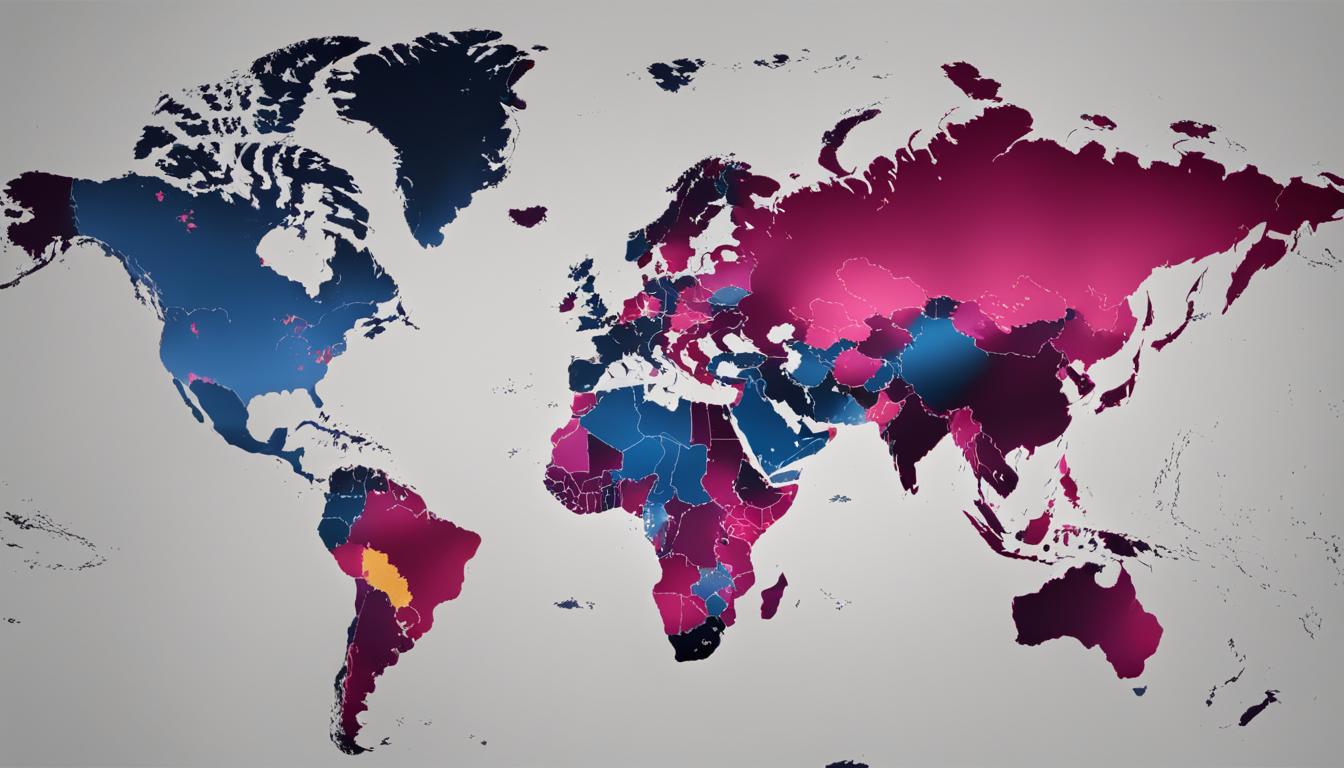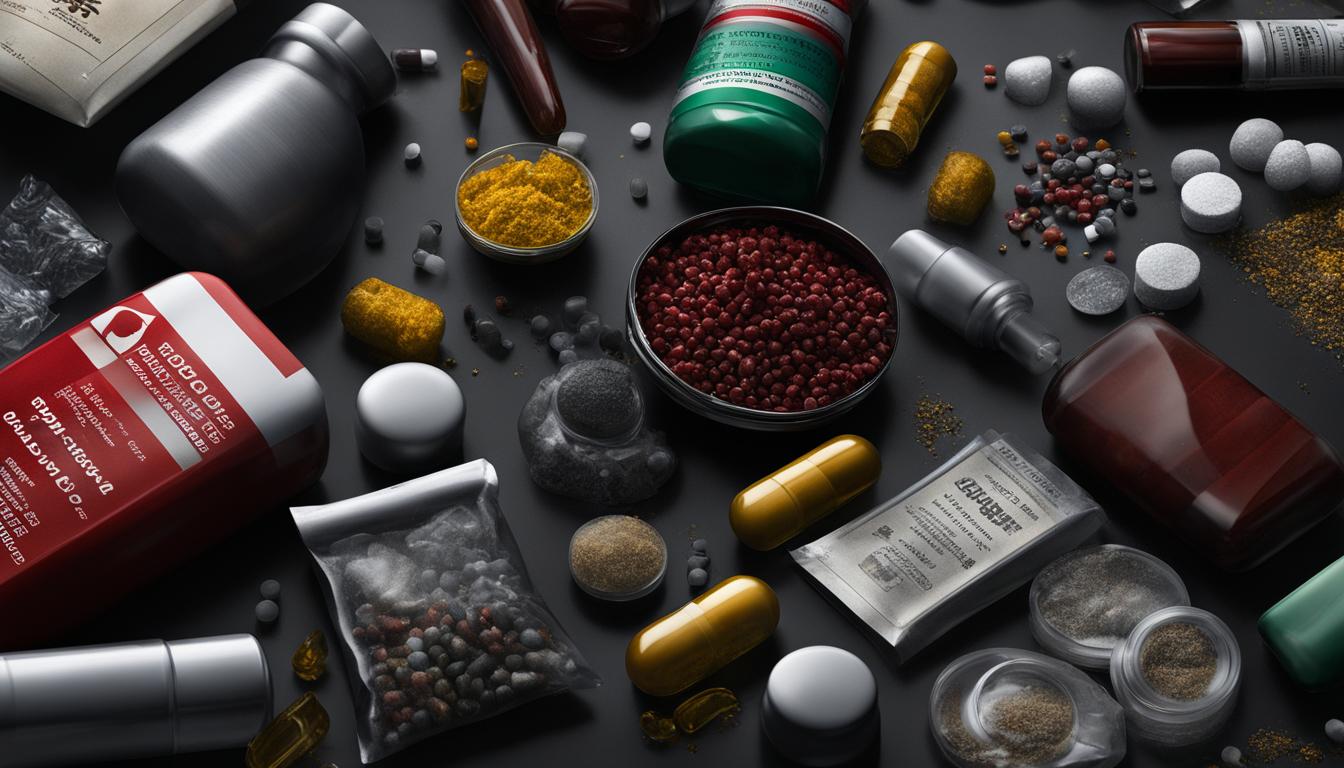Legalization of Drugs in Canada: A Closer Look
Did you know that Canada is joining a growing number of countries that have taken strides towards removing penalties for drug use? When British Columbia decriminalizes small amounts of certain illicit drugs next year, it will mark a significant shift in drug policy reform in Canada. As Canadian public health experts call for a regulated safe supply to replace black market street drugs, international counterparts are closely watching to learn from this bold move.
Key Takeaways:
- Canada is moving towards the decriminalization of small amounts of certain illicit drugs in an effort to reform drug policy.
- Public health experts are advocating for a regulated safe supply as a replacement for black market street drugs.
- International observers are closely watching Canada’s approach to drug policy reform to glean insights for their own countries.
- Implementing a safe and regulated drug supply would put Canada in uncharted territory globally.
- The legalization of drugs in Canada has the potential to impact public health outcomes and address the stigma associated with drug use.
International Perspectives on Decriminalization
When examining the global landscape of drug decriminalization and regulation, it is essential to consider the experiences and outcomes from various countries. These international perspectives offer valuable insights into the potential impacts and challenges associated with drug policy reform. Let’s explore some notable examples:
Estonia
Estonian experts highlight the consequences of decriminalizing all drugs in 2005. Following this change, Estonia experienced a surge in the black market for illegally manufactured fentanyl, leading to a fentanyl crisis and a high rate of drug overdose deaths. However, it is important to note that Estonia still lacks comprehensive harm reduction measures and safe consumption rooms.
Portugal
In 2001, Portugal decriminalized drug possession and use, focusing on education, treatment, and harm reduction. As a result, the country has achieved a significantly lower drug-related death rate compared to the European average. Portugal’s approach emphasizes addressing substance abuse as a public health issue rather than a criminal offense.
Switzerland
While Switzerland has not decriminalized drugs, it has implemented an innovative safe supply model. The country prescribes pharmaceutical-grade heroin to long-term users, resulting in reduced overdose deaths, lower rates of HIV and hepatitis C infections, and a decrease in overall crime associated with drug use.
United States – Oregon
In 2020, Oregon became the first state in the United States to decriminalize drugs. However, despite this policy change, both Canada and the United States continue to face rising deaths from drug overdoses. This highlights the importance of implementing comprehensive harm reduction measures and establishing a regulated safe supply to address the ongoing challenges in combating substance abuse.

| Country | Year of Decriminalization | Main Outcomes |
|---|---|---|
| Estonia | 2005 | Rise in black market fentanyl, fentanyl crisis, high drug overdose deaths |
| Portugal | 2001 | Significantly lower drug-related death rate, education, treatment, and harm reduction focus |
| Switzerland | N/A (Safe supply model) | Reduced overdose deaths, lower rates of HIV and hepatitis C infections, decrease in crime |
| United States (Oregon) | 2020 | Continued rise in drug overdose deaths, highlighting the need for harm reduction measures and a regulated safe supply |
B.C.’s Drug Decriminalization Pilot
Starting on Jan. 31, 2026, it is no longer a criminal offense to possess small amounts of certain illicit drugs in British Columbia. The three-year pilot is part of a federal government initiative to explore the effects of decriminalization on drug use and public health.
The drugs included in the pilot are cocaine (crack and powder), methamphetamine, MDMA, and opioids (including heroin, fentanyl, and morphine). The pilot aims to reduce drug toxicity deaths and shift the focus from criminalizing drug users to treating drug use as a public health issue.
Possessing drugs at schools, child-care facilities, and airports, as well as selling and trafficking drugs, will still be subject to criminal penalties. Police have been trained to enforce the new threshold and will provide information on health and social supports rather than confiscating drugs.

| Drugs | Legal Possession Threshold |
|---|---|
| Cocaine (crack and powder) | Up to 1 gram |
| Methamphetamine | Up to 1 gram |
| MDMA | Up to 2.5 grams |
| Opioids (including heroin, fentanyl, and morphine) | Up to 2.5 grams |
Benefits and Challenges of Decriminalization
The decriminalization of drugs offers several potential benefits, including:
- Reducing stigmatization and discrimination against drug users
- Promoting public health and harm reduction
- Shifting the focus from punishment to treatment and support
- Freeing up law enforcement resources to focus on more pressing issues
- Reducing the burden on the criminal justice system
Decriminalization can help create a society where individuals struggling with drug use are treated with compassion and support, rather than being criminalized.
However, challenges remain in the process of drug decriminalization:
- Ensuring the availability of a safe and regulated drug supply
- Addressing issues of drug contamination and toxicity
- Establishing comprehensive harm reduction measures and support services
- Changing societal attitudes and misconceptions surrounding drug use
These challenges require careful consideration and planning to mitigate potential risks and maximize the benefits of drug decriminalization.
| Benefits of Decriminalization | Challenges of Decriminalization |
|---|---|
|
|
The Role of Legal Regulation
Legal regulation plays a crucial role in shaping drug policy, with a focus on promoting public health, harm reduction, and human rights. By implementing policies and practices that eliminate criminal penalties for drugs, legal regulation aims to create a safer and more regulated environment for drug use. This approach prioritizes the protection of vulnerable populations, social justice, and participatory democracy.
Legal regulation is grounded in the principles of harm reduction, which aim to minimize the negative consequences associated with drug use. By shifting the focus from punishment to support, legal regulation recognizes the need to address drug-related issues as public health concerns rather than criminal offenses. This allows for the implementation of evidence-based strategies that prioritize the well-being of individuals and communities.
Examples of legal regulation can be seen in the regulation of alcohol, tobacco, prescription medications, and dietary supplements. These substances are subject to strict regulations regarding production, distribution, and consumption to ensure public safety and minimize harm. Similar principles can be applied to the regulation of drugs, with a focus on safety, normalization, and access to support services for drug users.
Research has shown that legal regulation can have numerous benefits, including reducing the stigma and discrimination faced by drug users, promoting public health outcomes, and addressing the underlying issues associated with drug use. By implementing a legal and regulated framework, we can create an environment that supports harm reduction practices, provides access to quality healthcare, and protects the rights of individuals.
In addition to its positive impact on public health, legal regulation also addresses human rights concerns. By shifting away from criminalization, legal regulation allows for the protection of human rights, including the right to health and personal autonomy. It recognizes that individuals who use drugs should be treated with dignity and respect, ensuring that they have access to the necessary support and resources.
Legal regulation is a pragmatic and humane approach to drug policy that acknowledges the complexities of drug use and aims to create a society that values public health, harm reduction, and human rights. By adopting legal regulation as part of our drug policy framework, we can pave the way for a more inclusive and compassionate society.
| Benefits of Legal Regulation | Challenges of Legal Regulation |
|---|---|
|
|
Distinctions Between Decriminalization and Legal Regulation
Decriminalization and legal regulation are two distinct approaches with different outcomes when it comes to drug policy. While both aim to address the issues surrounding drug use, they tackle them from different angles.
Decriminalization involves removing criminal penalties for drug possession and use. It aims to treat drug use as a public health issue rather than a criminal offense. By decriminalizing drug possession, individuals are less likely to face incarceration and can seek help and support without the fear of legal repercussions.
However, decriminalization alone does not address the broader challenges associated with drug use. It does not address the issue of a contaminated drug supply, which can lead to drug toxicity and death. Additionally, it does not directly combat the involvement of transnational organized crime in the drug trade.
Legal regulation takes decriminalization a step further by implementing a system of regulated and safe drug supply. It aims to provide access to controlled substances in a controlled and regulated manner, reducing the risks associated with drug toxicity and death.
Legal regulation also shifts the role of enforcement from solely criminalizing drug users to focusing on disrupting the trafficking and supply chains that are often facilitated by transnational organized crime. By providing a legal and regulated alternative, legal regulation aims to undermine the influence and impact of these criminal organizations.
Risks Addressed by Legal Regulation
- Contaminated drug supply resulting in drug toxicity and death
- Involvement of transnational organized crime in the drug trade
By implementing legal regulation, countries can mitigate the risks associated with drug use and trafficking while promoting public health and safety. It offers a more comprehensive approach to drug policy that combines harm reduction, regulation, and enforcement measures.
Moving Forward with Drug Policy Reform
To effectively address the challenges related to drug use and improve public health outcomes, Canada must adopt a comprehensive approach to drug policy reform. This approach entails implementing evidence-based harm reduction measures that prioritize public health and safety.
One key aspect of drug policy reform is the establishment of supervised consumption sites and needle exchange programs. These initiatives provide a safe and controlled environment for individuals to use drugs, reducing the risk of overdose and the transmission of infectious diseases.
In addition, access to a safe and regulated drug supply is crucial. By ensuring that drugs are manufactured and distributed under strict regulations, the quality and potency of substances can be controlled, minimizing the harms associated with contaminated or toxic drugs.
Furthermore, treating drug use as a public health issue rather than a criminal one is essential. Instead of punitive measures, individuals struggling with substance abuse should have access to comprehensive treatment and support services. This includes addiction counseling, rehabilitation programs, and mental health services to address the underlying factors contributing to drug use.
By adopting this comprehensive approach and drawing on lessons from international experiences, Canada can pave the way for effective drug policy reform. By prioritizing harm reduction, public health, and access to treatment, we can create a safer and healthier society for all.
- The Role of Police in Community Safety & Unity - October 6, 2025
- Quebec Police Officer Salary Insights 2023 - July 13, 2025
- Canada Arrest Protocol: What Police Say Upon Arrest - June 12, 2025




















Post Comment